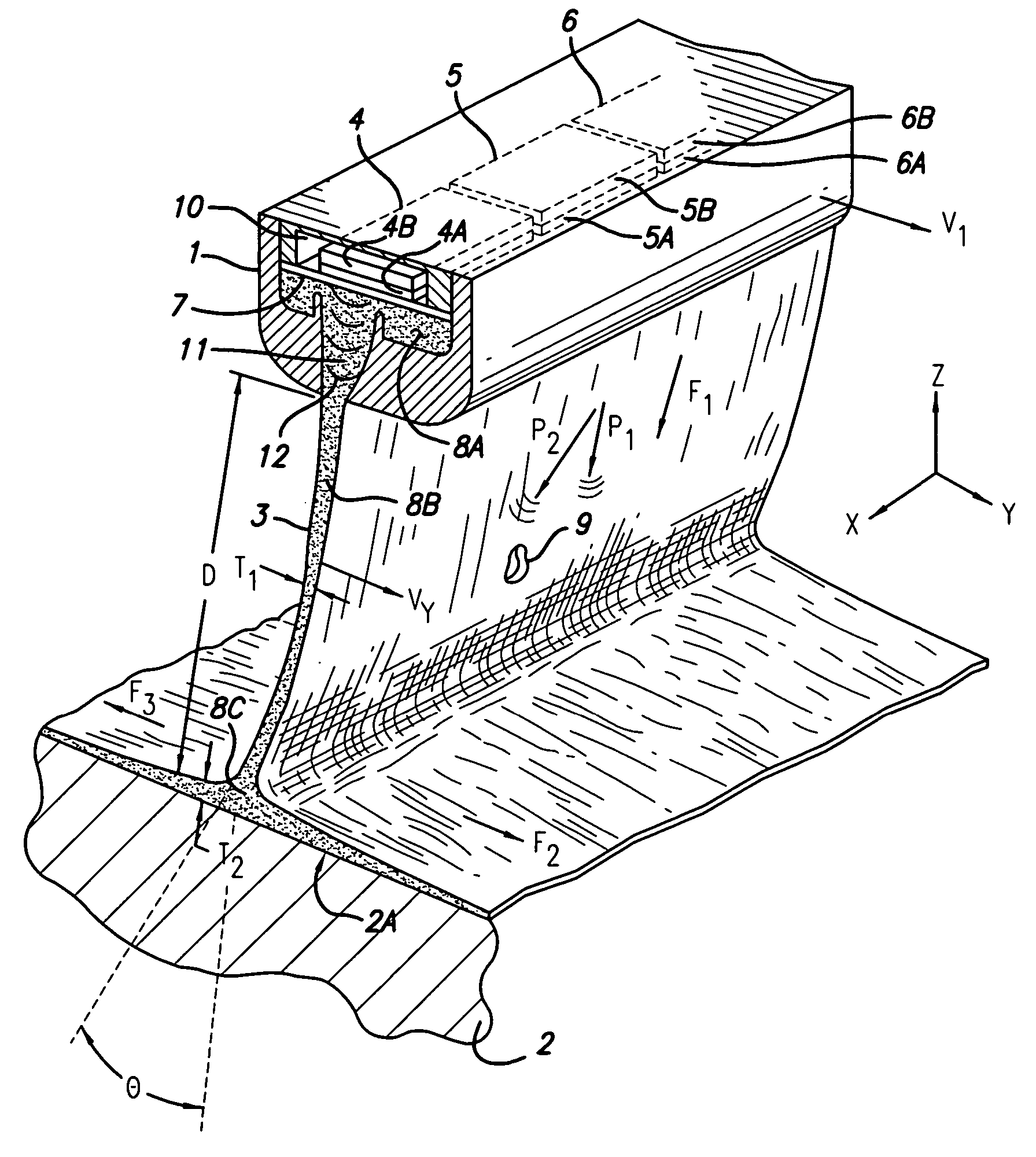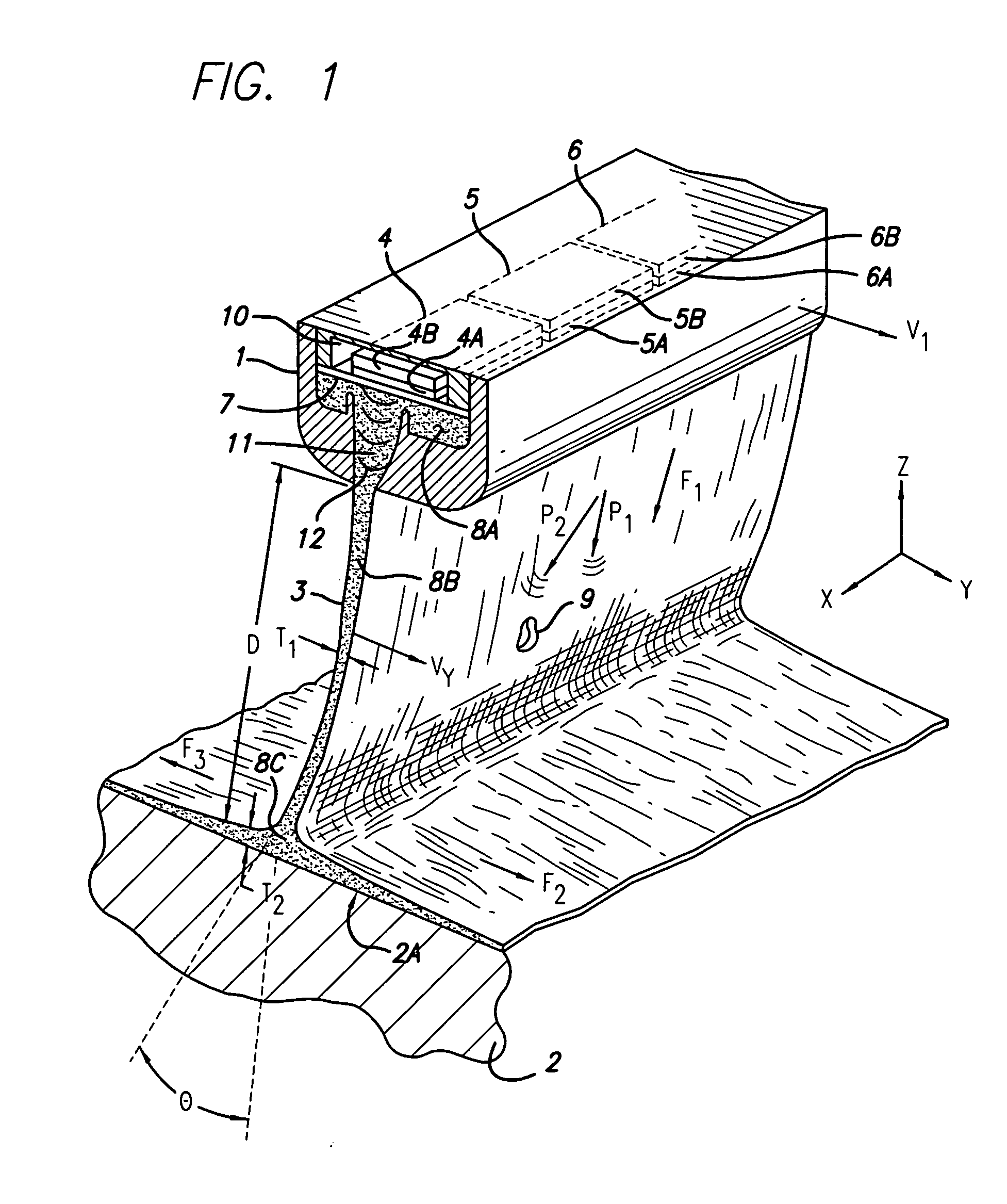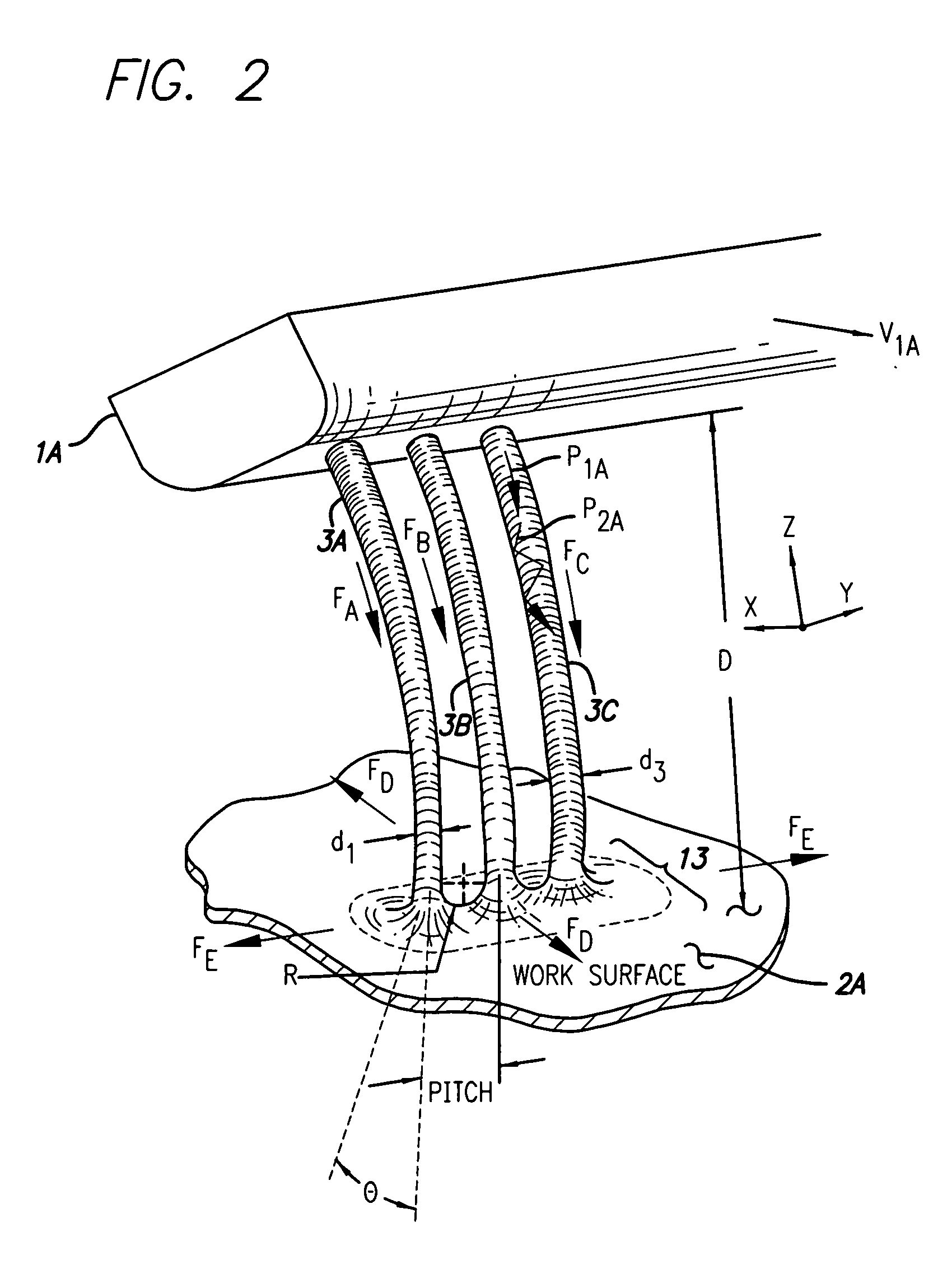Such systems and their ultrasonic output are never used on
human skin, as any such significant
cavitation would cause
skin damage of a mechanical and thermal nature as well as pain.
The point is that
cavitation is the primary industrial acoustical cleaning or treating mechanism for inanimate surfaces, but it is not regarded as safe for
human skin use as reflected by federal regulations of the
Food And Drug Administration (FDA) in the United States.
The
skin is a very sensitive organ and is easily damaged by cavitation phenomenon even on its surface.
Again, any significant cavitation-
exposure of the gums would both be painful and damaging.
However, as will be seen, we deliver disruptive cleaning energy in a different manner.
These systems use sonic echoes to analyze the object and take great pains in their design and operation to avoid any disruptive action at all.
Note that cavitation phenomenon, if allowed, would not only damage the workpiece but also introduce unwanted acoustic
harmonics into the received echo signals.
Generally, such NDT systems use as short a
coupling water plume as possible, as every surface
ripple and bubble in the plume introduce acoustic
confounding noise to the NDT process.
This device was neither clinically nor commercially successful because the design of the device ignored prior art that teaches that powers of even a few watts / cm2 cause
severe pain and undesirable sensations (as well as cellular damage) to the sensitive gums in real human applications.
Also, the Von Guffield ultrasonic
transducer was not liquid cooled nor air-backed, thus limiting the
power level and efficiency at which it could operate.
The Von Guffield disclosure did not teach the use of high power ultrasonic energy and in fact tried to keep the energy low enough to avoid admitted discomfort, which also meant that the cleaning action was rendered relatively ineffective.
Had Von Guffield used high power in the range contemplated by the device disclosed and claimed in the instant application, Von Guffield's
transducer would have overheated and failed, as well as caused severe disabling pain and serious gum damage to the patient due to cavitation.
Immersion systems do not use flowing-liquid transducer cooling and none have contemplated their use in connection with a liquid stream that is delivering substantial acoustic cleaning energy to a distant non-immersed object.
Immersion systems are effective for cleaning items that can be put into their tanks, but impractical for on-site field cleaning of large objects that cannot be easily moved into or even fit into a tank.
The Von Guffield device was designed for spot cleaning of live teeth in situ and cannot deliver sufficient power or a large enough acoustically energized liquid stream for effective use in industrial-type cleaning.
Pressure washers of the type that typically use
piston or diaphragm pumps to deliver water blast cleaning through a
nozzle at pressures upwards of 1000 psi are useful, but not nearly as effective as the instant invention, which can actually clean any portion of an object that the acoustically energized liquid can contact, including backsides, interstices, and other areas that are treated far less effectively by mere pressure blasts directed from a distal point.
High-pressure jet washers do not utilize ultrasonics and thus are still subject to fluid boundary-thickness effects.
Such destruction, given the presence of cavitation, is unavoidable both on the
macroscopic scale and on the microscopic cellular or genetic scale.
The point to be taken here is that Miwa's treatment, in industrial terms, is a very-low power
ultrasound treatment as well as a non-cavitation treatment unlike virtually all industrial treatments and is not useful as an industrial treatment.
The passage of such low power or non-cavitating
ultrasound through a water stream is not at all new and has been practiced for decades in the use of water-plume coupled NDT (non-
destructive testing) transducers as mentioned above.
This results in acoustic interference, acoustic misdirection, and large acoustic non-uniformities in
acoustics emanating from some or all of the orifices.
So the prior art fails to teach a means to deliver high-power acoustical cleaning or treating energy through a liquid stream in a manner wherein: a) the transducer is not thermally damaged, b) wherein interfering reflections do not degrade the passing acoustical energy, c) wherein cavitation in the streaming device damages the streaming device and its orifice(s), d) wherein acoustical cavitation can be driven at a distal location along the stream (if it is desired), or e) wherein cavitation, treatment or cleaning agents are delivered into or to the stream.
Further, none of the prior art teaches the use of f) acoustical echoes passed along such a stream to monitor or assess a parameter such as attenuation, detergent-content or a workpiece-distance for such a cleaning or treating process.
Finally, none of the prior art teaches g) the manipulation of the shape of the stream(s) or jet(s) to enhance acoustical waveguiding or acoustical amplification phenomenon such that distal cavitation can be accomplished.
The prior art low-flow approach would not allow for a meter-length plume to be formed at any significant angle to gravity or the vertical using water.
In dental applications, it would involve very high flows introducing further considerable uncomfortable sensations and mouth flooding even with oral aspiration.
 Login to View More
Login to View More  Login to View More
Login to View More 


